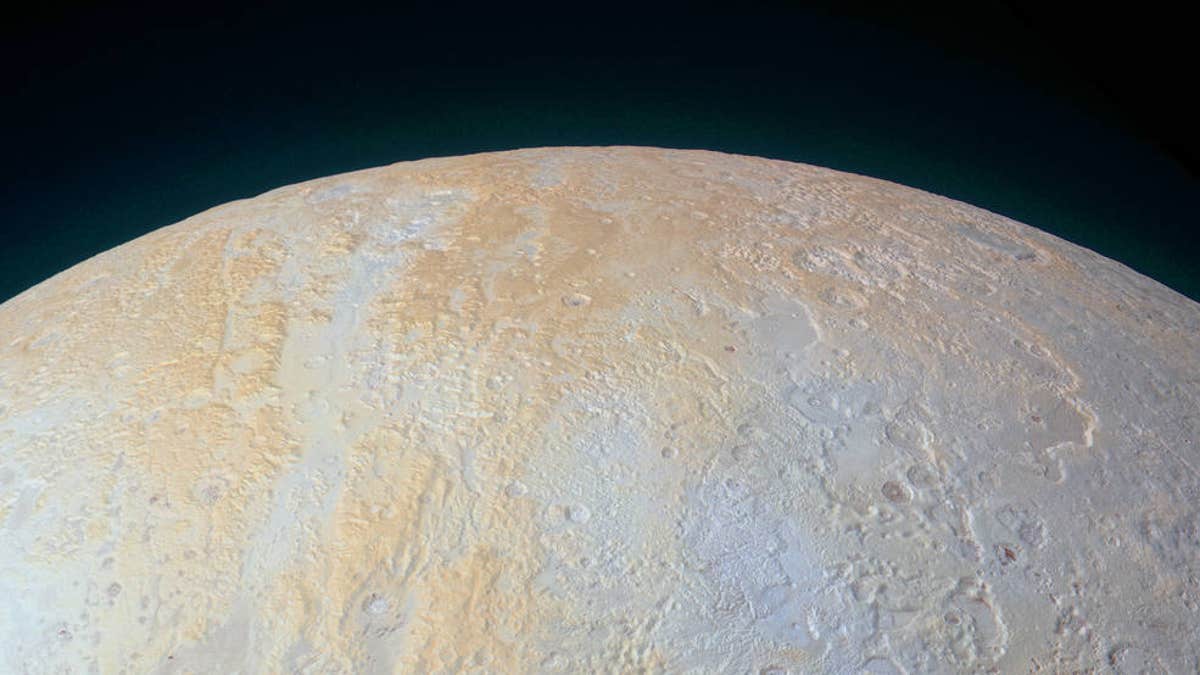
This ethereal scene captured by NASA’s New Horizons spacecraft tells yet another story of Pluto’s diversity of geological and compositional features—this time in an enhanced color image of the north polar area. (NASA)
It may have demoted to a dwarf planet but this image shows that Pluto continues to confound and surprise scientists.
The image from the New Horizon spacecraft showcases icy canyon’s on Pluto’s north pole. The long canyons run vertically across the polar area—part of the informally named Lowell Regio, named for Percival Lowell, who founded Lowell Observatory and initiated the search that led to Pluto’s discovery.
The widest of the canyons is about 45 miles wide and runs close to the north pole. Roughly parallel subsidiary canyons to the east and west are approximately 6 miles wide. Unlike the canyons on other parts of Pluto, the degraded walls of these canyons appear to be much older and may provide evidence of ancient period of tectonics on the planet.
Related: NASA releases dramatic new Pluto images
Along with the canyons, you can see a shallow, winding valley that runs the entire length of the canyon floor as well as large, irregularly-shaped pits that reach 45 miles across and 2.5 miles deep. These pits may be where subsurface ice has melted from below, causing the ground to collapse.
Another unusual quality of this region is the color.
High elevations show up in a distinctive yellow, something not seen elsewhere on Pluto. The yellowish terrain fades to a bluish gray at lower elevations and latitudes and coincides with New Horizons' infrared measurements indicating methane ice is abundant across Lowell Regio.
Related: Cool NASA images reveal day in the life of Pluto
“One possibility is that the yellow terrains may correspond to older methane deposits that have been more processed by solar radiation than the bluer terrain,” said Will Grundy, New Horizons composition team lead from Lowell Observatory said in a statement.
The image was obtained at a range of approximately 21,100 miles from Pluto, about 45 minutes before New Horizons’ closest approach of its historic flyby on July 14.
